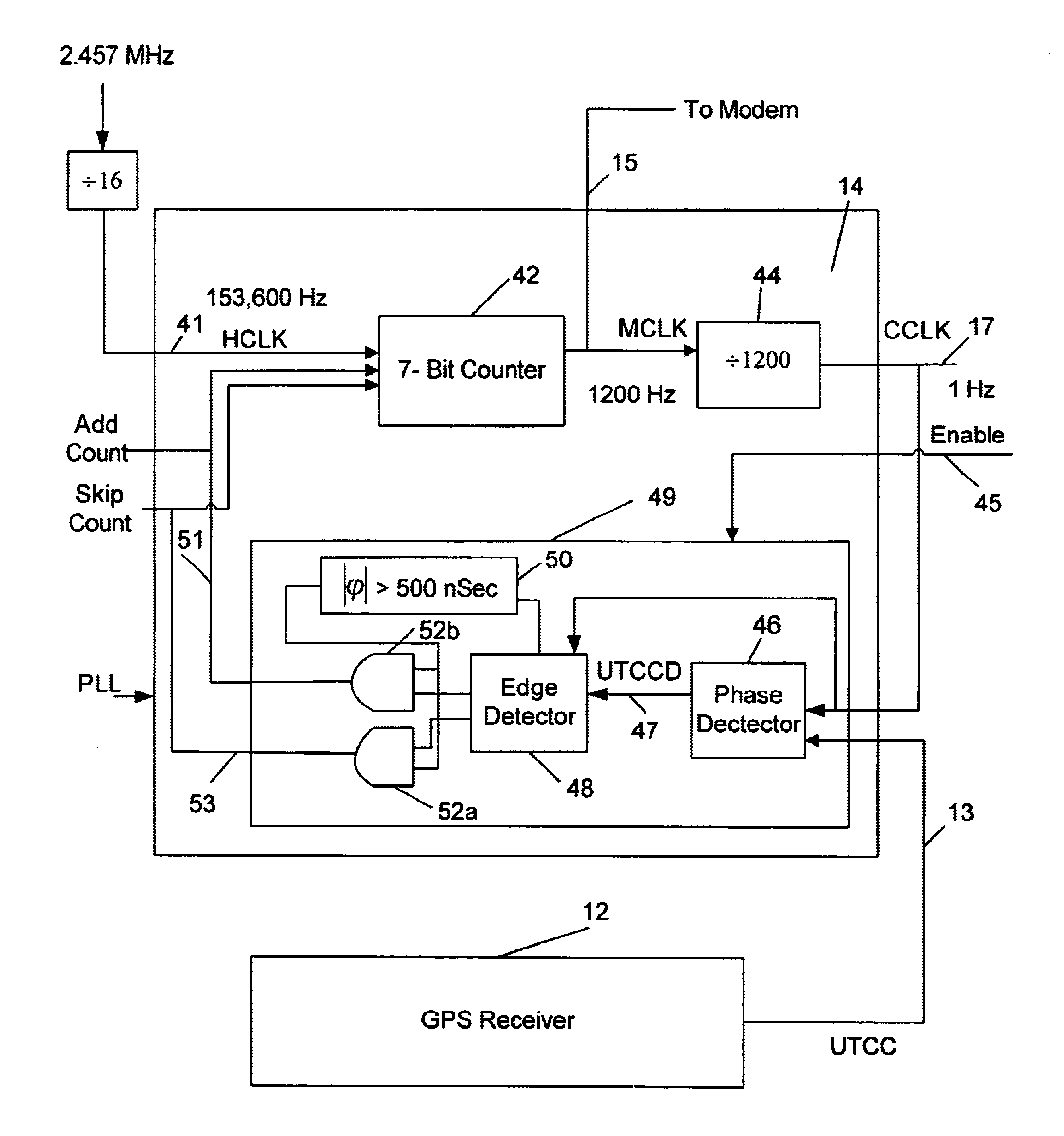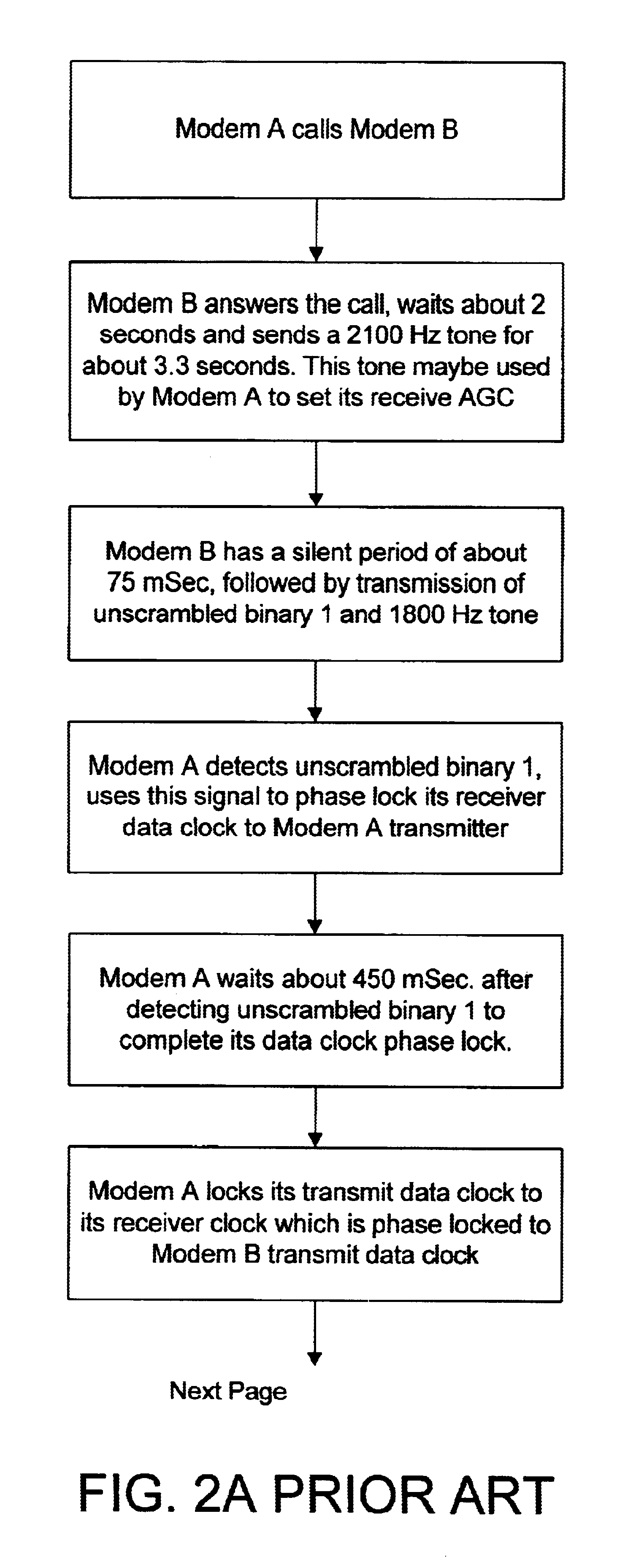Short synchronization time data modem
a modem and data modem technology, applied in the field of short synchronization time data modem, can solve the problems of insignificant bit clock, insignificant clock error, and 333 nanosecond clock error, and achieve the effect of reducing the synchronization time of the modem and fast clock synchronization
- Summary
- Abstract
- Description
- Claims
- Application Information
AI Technical Summary
Benefits of technology
Problems solved by technology
Method used
Image
Examples
Embodiment Construction
)
In a preferred modem system application environment contemplated, a first data modem system communicates with one or more remote data modem systems, wherein each data modem system comprises a short synchronization time data modem system 10 of FIG. 1 provided in accordance to the principles of this invention. The first modem system 10 communicating with one or more modem systems 10 remotely located to the first modem system 10, such as located at a central monitoring station, maintains synchronization with that one or more remotely located modem system 10 using a precise broadcasted clock available to each GPS receiver 12 provided via incoming broadcasted signal 11. FIG. 1 illustrates a block diagram of the preferred embodiment of a short synchronization time data modem system 10 comprising a Global Positioning Satellite (GPS) receiver 12, a Phase-Locked Loop Circuit (PLL) 14, and a modem circuit 16. GPS receiver 12 comprises a typical RF front-end circuit coupled to a signal proces...
PUM
 Login to View More
Login to View More Abstract
Description
Claims
Application Information
 Login to View More
Login to View More - R&D
- Intellectual Property
- Life Sciences
- Materials
- Tech Scout
- Unparalleled Data Quality
- Higher Quality Content
- 60% Fewer Hallucinations
Browse by: Latest US Patents, China's latest patents, Technical Efficacy Thesaurus, Application Domain, Technology Topic, Popular Technical Reports.
© 2025 PatSnap. All rights reserved.Legal|Privacy policy|Modern Slavery Act Transparency Statement|Sitemap|About US| Contact US: help@patsnap.com



